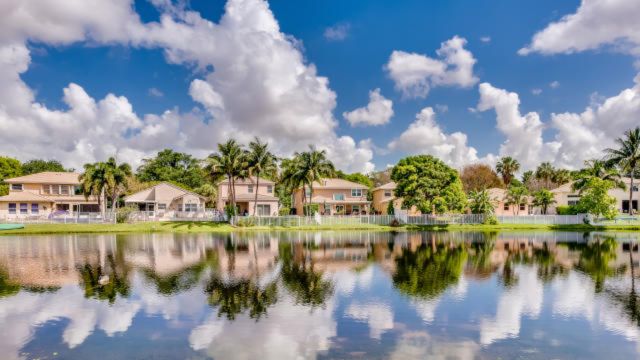S&P Global reports that homeowner’s insurance premiums have increased by more than 10% in half of the states within the last year and that this trend is widespread across the nation. Among states where homeowners pay $4,000 or more a year, one stands out.
In 2023, 20% of homeowners in Florida paid that much for homeowners insurance, according to the Census Bureau’s 2023 American Community Survey, which was released on September 12.
Worryingly, rates in Florida jumped by an astounding 43.2% from 2018 to 2023, as reported by S&P Global.
A new article from Realtor.com states that homeowners who are already struggling to fulfill their monthly mortgage payment requirements may find it much more challenging due to these rising rates.

According to Realtor.com writer and report author Keith Griffith, house insurance prices have increased nationwide due to record-high claims from natural catastrophes in recent years.
He went on to say that 2023 was the worst year for weather and climate disasters in terms of financial value in U.S. history.
Upcoming Hike! Home Insurance Rates in California Surge by 34% as Allstate Increases Premiums
Griffith added that home insurers in Florida had increased premiums due to the increased danger of catastrophic storms and floods. “The higher premiums in coastal Texas and Louisiana are a result of the shared dangers of storms and flooding.”
You could be making the same financial blunders that the ultra-wealthy avoid at all costs.
Dangers from the Weather
Real estate agent and owner of Florida Cash Home Buyers Omer Reiner noted that the yearly fear of hurricanes—”which can be catastrophic”—is a key factor in the high rates.
In addition to a high incidence of insurance fraud and legal disputes, Reiner stated that “a fair number of insurers have either stopped offering coverage to Floridians or didn’t get into this market to begin with” due to the state’s reputation for hazardous weather. “Prices go up for everyone due to litigation and a lack of competition.”
To add insult to injury, Insurify reports that “and all have average annual rates above $11,000” for homeowners insurance in six of Florida’s ten most costly communities.
Exit of Insurance Companies from Florida, Suppressing Market Competition
Dozens of insurance firms have departed or gone bankrupt in the previous several years.
Farmers Insurance, for example, informed CBS News that it will cease providing insurance in the Sunshine State in 2023, making it the fourth big insurer to do so that year and impacting thousands of Floridians.
Furthermore, certain insurance providers, including AAA, have chosen to curtail the coverage they initially provided to homes.
According to a press release from AAA in July 2023, the company mentioned that they had to make the tough decision not to renew a tiny fraction of higher exposure homeowner’s insurance in Florida.
Growing Legal Expenses and Construction Costs
Some experts have pointed out that increasing building costs, caused in part by inflation and interruptions in the supply chain, are another major concern.
“Insurers are adjusting their risk models and charging higher premiums now that rebuilding homes after a disaster is more expensive,” stated Dutch Mendenhall, co-founder of RADD Companies.
Another factor is the difficulties associated with insurance claims in Florida, a state with a higher incidence of litigation and fraud. Mendenhall noted that this causes insurers to incur additional expenditures, which in turn increases prices for everyone.
Homeowners are already bearing the brunt of rising house prices and loan rates, he added, and now they have to worry about even higher insurance premiums.
In fact, out of all the insurance cases filed in the US, 79% are in Florida, while only 21% are filed elsewhere, according to Insurance.com.
Buyers may be less inclined to purchase properties in high-risk areas if they are faced with bigger financial obligations, which could lead to future price reductions, according to Mendenhall.
It is important for homeowners to take proactive measures to reduce risks, such as investing in hurricane-resistant renovations and flood-proofing, in order to potentially reduce insurance costs in the long run, he noted.




